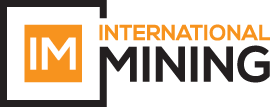 Gold-endowed Ghana remains a high-class target for exploration and mining investment but its recent move to a “bigger picture” approach may impact future perceptions about its investment appeal, according to one of the most prominent Australian explorers there, Perth-based Viking Ashanti. Addressing the first day in Perth this week of the Paydirt 2012 Australian Gold Conference, Viking Ashanti Managing Director, Peter McMickan, said Ghana remained an exceptional “good for gold” province. “It continues to be politically and socially stable, offers strong mining infrastructure and services, can point to a successful 25 year record of modern mining, and with 3 Moz of gold output last year, confirms its hold as Africa’s second largest and the world’s ninth largest gold producer,” McMickan said.
Gold-endowed Ghana remains a high-class target for exploration and mining investment but its recent move to a “bigger picture” approach may impact future perceptions about its investment appeal, according to one of the most prominent Australian explorers there, Perth-based Viking Ashanti. Addressing the first day in Perth this week of the Paydirt 2012 Australian Gold Conference, Viking Ashanti Managing Director, Peter McMickan, said Ghana remained an exceptional “good for gold” province. “It continues to be politically and socially stable, offers strong mining infrastructure and services, can point to a successful 25 year record of modern mining, and with 3 Moz of gold output last year, confirms its hold as Africa’s second largest and the world’s ninth largest gold producer,” McMickan said.
“However, what it has to deal with in future, as well as the global gold investment community, is that the perception about its appeal will now change because of its move towards the bigger mining picture,” he said.
“In the past 18 months alone, it has lifted its gold royalty from 3 to 5%. Ghana’s company tax rate has also been increased in that same timeframe from 30% to 35%. These are not gamebreaking impacts in terms of Ghana’s gold exploration and mining upside but they will alter current perceptions about doing business there.
“Its risk-reward profile remains positive but the higher charges will take the edge off the competitiveness enjoyed by it to date, particularly as there is now considerable resource investor interest in the emerging mining and development opportunities in the broader west African region.”
McMickan said the sector continued to face challenges in ensuring a sufficient skills base for Ghana’s expanding mining industry.
This was attributable to two main factors – the new government policy requiring 90% of a mining project’s workforce to be from indigenous communities and the fact that maturing projects making the transition to mining, required a much higher professional workforce such as mining engineers and mine managers.
“It is fair to say that this growth is starting to stretch the breadth and depth of Ghana’s existing and potential exploration and mining workforce and is an issue that needs to be jointly addressed by all stakeholders looking to build a modern mining era for Ghana,” McMickan said.
Viking Ashanti earlier this month announced a 40% higher JORC classified Inferred resource estimate of 18.0 Mt @ 1.2 g/t Au for 704,000 oz of contained gold, at a 0.5 g/t Au cut-off, for its 100%-owned Akoase East gold project in southern Ghana.
The Company said then it now had increased confidence to build a significant further resource at Akoase East to see the deposit grow well beyond 1 Moz.









